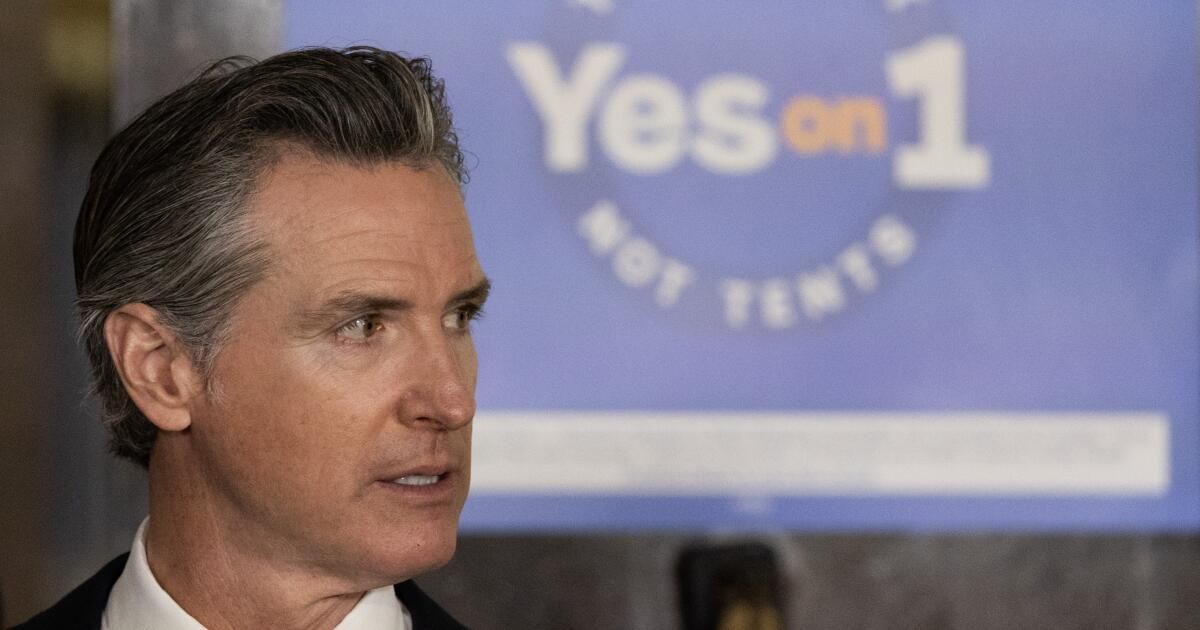In a race so close that it took more than two weeks to decide the race, Californians narrowly approved Proposition 1, a $6.4 billion bond measure and reallocating existing funds to address mental health and homelessness in the state.
Proponents of Proposition 1 say it will create much-needed housing and treatment facilities that can also address the state's addiction and homelessness crises, including among veterans. Opponents see state funds being diverted from basic psychiatric services to the construction of housing and facilities, and a worrying shift from voluntary to involuntary treatment that will recreate the asylum erawhen people were forcibly committed to long-term psychiatric hospitals.
Indeed, the estimated The 4,350 housing units to be funded will not make a dent in the homelessness crisis, nor will the estimated 6,800 additional treatment beds. return us to the psychiatric dark ages. The measure is intended to fund new treatment infrastructure, but remains opaque on the type, quality and continuity of care. Now we should be asking what treatment people in these residential programs will receive and how they will be supported if they move into independent housing.
I study how inequality shapes the psychiatric care people receive. Yo have observed everything from street outreach programs and supportive housing for the homeless to exclusive private residential facilities for the wealthy. When people receive high-quality mental health and social services, whether from a public or private entity, their life trajectories can fundamentally improve. However, adding more money and beds does not necessarily mean better care. If we create facilities without a plan to provide effective treatment, we may not only waste this opportunity: we could make things worse.
Let's consider the housing model first, which provides immediate housing and then mental health care. Some research indicates which, when implemented correctly, can lead to long-term housing retention and improved health and addiction outcomes. Still other research shows There is wide variation: Residents of poorly managed programs do not have better health outcomes than those living on the streets. I have witnessed inspiring care, but I have also seen low-income providers participate in “tolerant containment”: leaving people alone to use substances and self-destruct on the condition that they remain in the housing provided.
For a person in immediate crisis, forced care, such as hospitalization and closed residential facilities, can be life-saving. However, considerable investigation also shows that poorly implemented coercion can backfire. Patients describe humiliation and loss of bodily autonomy. As a result, they withdraw from treatment and are at high risk for suicide. People can endure coercion if they are treated with dignity, but all too often they are not. Many things can go wrong, so with billions of dollars at stake, it's important to find which models work best.
Getting people settled and off the streets is obviously a good foundation in the hierarchy of needs, but it is far from enough. Many people benefit from serious programming that continues from residential to independent living, and from having the support of providers who are committed to helping them achieve more than just staying home. Of course, this only works if there are resources for providers and opportunities for patients to find meaningful roles in society. Money and thought must be invested in programming, not simply building homes. That's why critics They argue that Proposition 1 will cause harm by redirecting some funds used for existing mental health programs toward housing construction.
When the State bids for the construction of residential facilities, it should not focus solely on who can build at the cheapest price. Rather, officials should look at who can design the right kind of environment for patients. Investigation shows how the physical layout of a hospital ward can dramatically alter people's experience. The state should also think about balancing the types of facilities it will create. As sociologist Alex Barnard says arguesAdding “beds” conflates important distinctions: California may actually have enough facilities for psychiatric emergencies, for example, but not enough long-term options for people who are almost ready to live alone again.
Above all, we must listen to patients, who often have untapped experience in what constitutes good care. Many patient rights groups took a stand against Proposition 1 and warned about the dangers of coercion. Although his voices should have been prioritized from the beginning, it is not too late to include his ideas to help make smart policy decisions.
When state officials face a massive homelessness crisis and visible public suffering, they may worry about speed: building as many facilities as quickly as possible. But if we don't take into account what it means to truly support people in their recovery and independence, we risk wasting money.
Poorly provided care is often counterproductive and can be worse than nothing. We should start providing the high-quality care Californians deserve—with dignity, choice, and the promise of a real future—or we will end up paying for one more failed reform.
Neil Gong is an assistant professor of sociology at UC San Diego and author of “Sons, Daughters, and Psychotics on the Sidewalks: Mental Illness and Homelessness in Los Angeles.”











